When I picked up the controller to play The Last of Us Part II for the first time, I couldn’t shake an image from my head: Ellie, lip tensed, brow furrowed, eyes flitting around, wondering whether or not to accept what she’s just been told. She nods. Says okay. But her face hasn’t changed.
This is the final shot of The Last of Us, the 2013 Naughty Dog game that followed Ellie, then a 14-year-old girl, and a man named Joel on a journey across a post-apocalyptic America ravaged by, to put it bluntly, mushroom zombies. Don’t fret if you haven’t played it: I’m not going to spoil the context surrounding that final moment, beyond that Joel and Ellie survive, since dancing around that fact would make it borderline impossible to talk about the upcoming sequel.
I won’t claim that The Last of Us is a perfect game, or even that its storytelling is flawless. But that ending, that exact span of five or so seconds, was perfect. No game I’ve ever played has ended with that much confidence, letting such a powerful, uncertain moment hang in the air, maybe forever. No part of me wanted or needed to know what happened next.
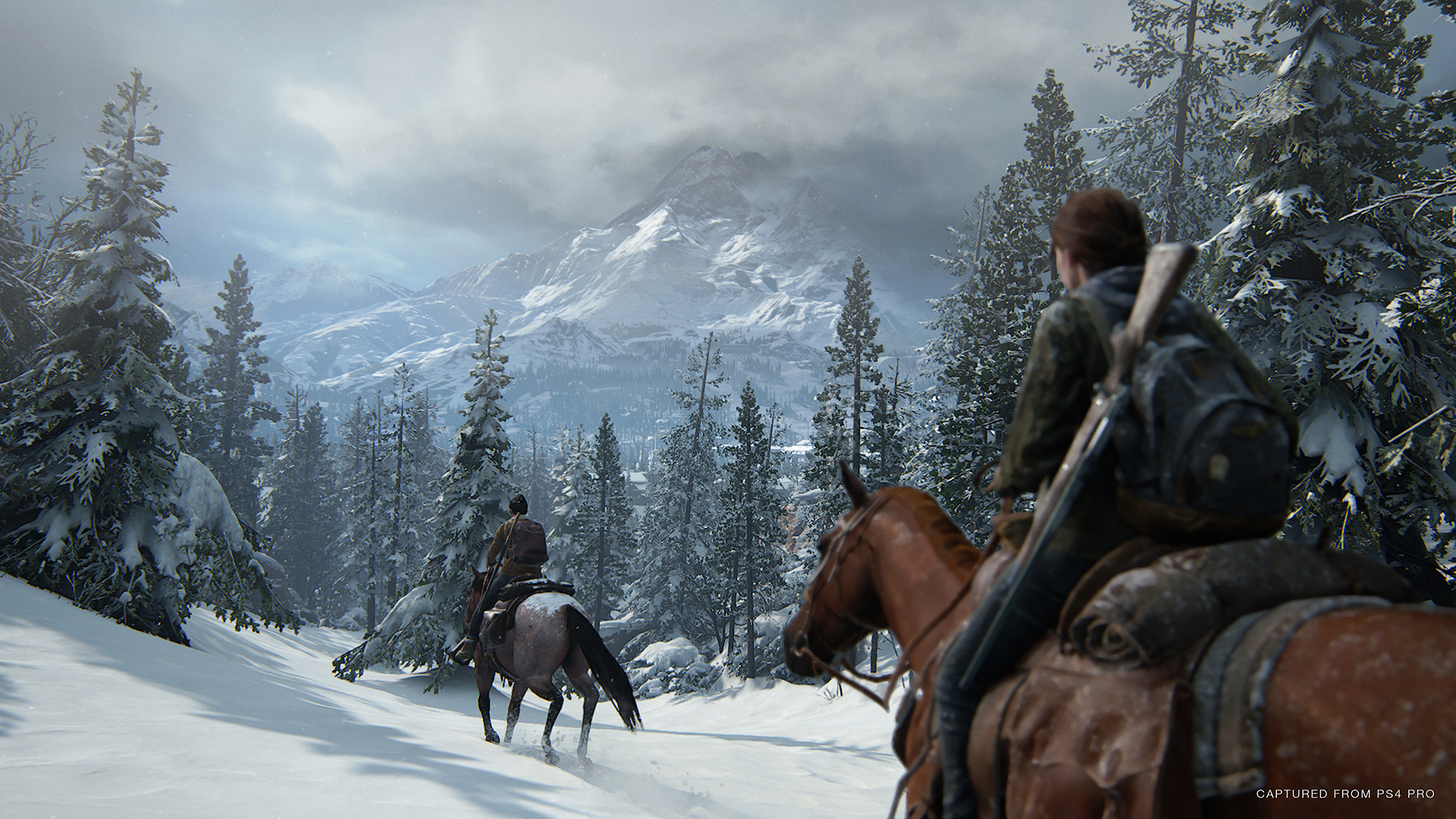
In other words, I wanted my time with The Last of Us Part II to convince me it needed to exist in the first place. That’s a big ask for a demo, even one that’s hours long and that covers two very different sections of the game.
The first segment, set in the opening hours of the story, put me in control of Ellie, now 19, as she rode out on patrol from Jackson, the settlement where she now lives and has found some measure of stability. With her was Dina, the friend and love interest who appeared in the E3 2018 demo with the now-famous kiss.
We rode out through the wilderness between checkpoints, making small talk along the way and revealing a little more about their lives back in Jackson, including the fact that, at least for the time being, Joel is still kicking. I was impressed by how seamless and naturalistic all the environmental puzzles were. Throwing the cable from a broken AC unit over the top of a vent up above us, such that it fell back down on the far side and made a rope to climb felt a little less video game-y than it probably sounds reading it. I’m hoping The Last of Us Part II offers a variety of these kinds of moments, and not just a lot of the moving dumpsters and ladders that defined the predecessor.
Equally impressive were the visuals. The horses and snow both looked spectacular, especially when a storm picked up and started to white out the surroundings, separating me from Dina. If not for Red Dead Redemption II, I think it might be the best looking snow I’ve ever seen in a game.
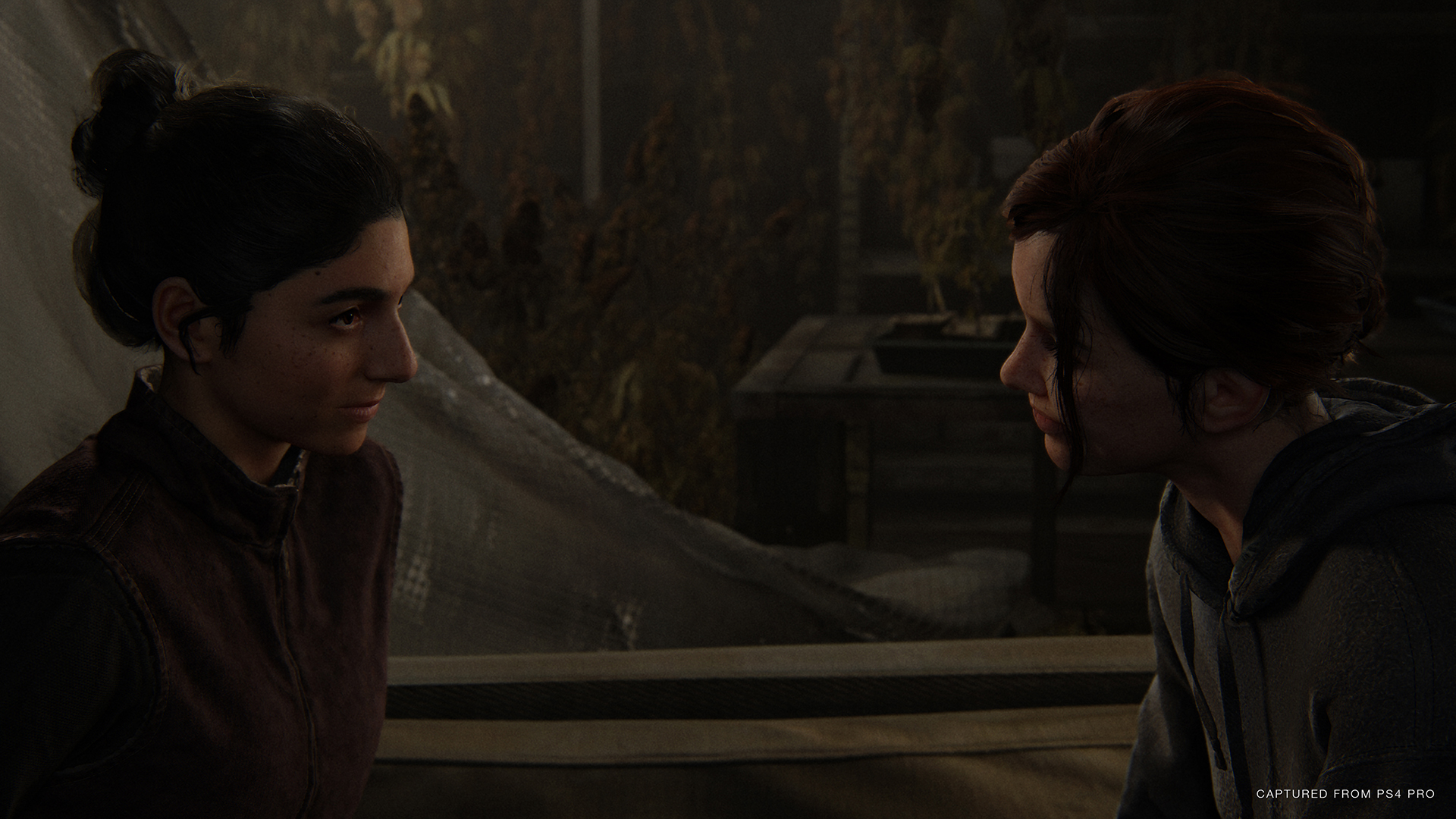
Obviously, this section was serving as a tutorial, given the way it gradually introduced basic mechanics from the first game like crafting and weapon upgrades. But despite that fact, I didn’t feel like I was being rushed through some artificial practice area. Every time I’d learn something new, it would be followed by minutes of exploration, story, and character beats. In some respects, it reminded me more of the first game’s DLC, Left Behind, then it did the main game.
After I played through the demo, I had a chance to speak with the games lead animator, Almudena Soria. I asked her if the team had taken any lessons in particular from its work on Left Behind. “We make games that I don’t think anyone else can make because we put a lot of effort and emphasis on mixing the gameplay with the core themes of the game,” Soria said. “So, you know, how to craft these characters that are complex, that have motivations, that feel real. That’s what we want to do. We’re learning to make better stories.”
The next section of the demo, we were told, takes place much later in the game. At this point, Ellie is on her own, having made it to Seattle on her ambiguous quest for vengeance. The city is overgrown, with a far lusher, denser look than similar areas in the first game. Some of this, I’m sure, comes down to the rainier climate, but it also helps drive home the feeling that it’s not five years later in a smart way. During this segment, Ellie mostly had to contend with human foes from a local militia called the Washington Liberation Front, or WLF for short. The group’s iconography is, unsurprisingly, wolf-themed.
Still, this is the area where I first came across a new type of infected, the “shambler.” As best as I could figure out, there’s no way to do a stealth takedown on these guys, even though they’re only slightly larger than a Clicker. Shamblers have the nasty habit of spewing something all over you—I wasn’t sure if it was acid, spores, or some chunky soup mix of both—and the added gift of exploding after they die.
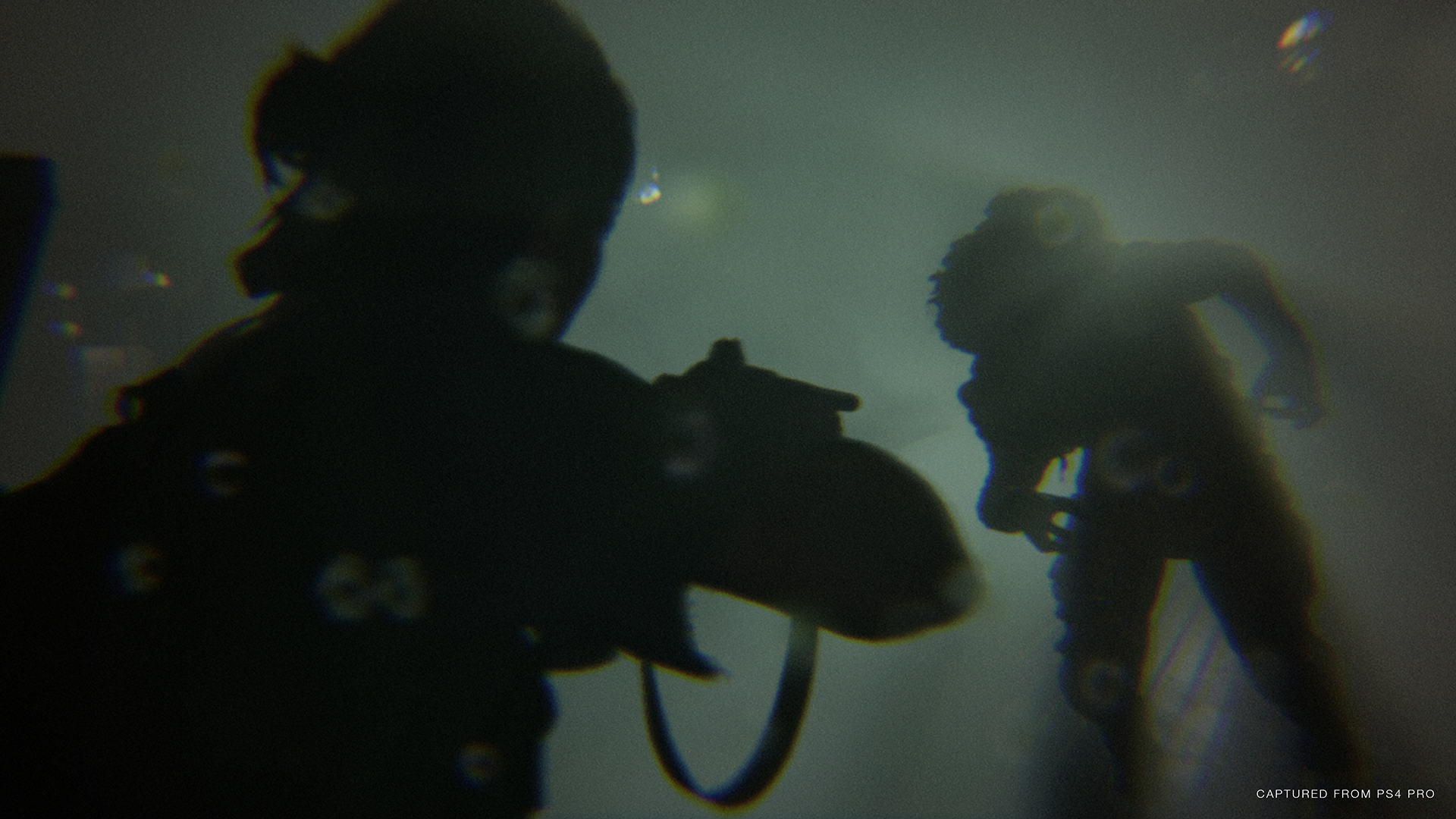
The Seattle gameplay also featured a pair of memorable encounters with less-advanced infected. The first was a fight against a bow-wielding infected in a miniboss of sorts, after which I finally got to use a bow as Ellie. The neat thing wasn’t the fight itself, which was pretty standard. What I appreciated was that all of the collectibles I found in the level up to that point provided a backstory for who this infected was—his name was Boris—and what had gone on in the days leading up to his infection. Maybe my memory is failing me, but I can’t recall anything quite like that in the first game, a segment where the artifacts you could find gave the backstory to a specific enemy, rather than just telling the backstory of an area.
The second was a purely optional encounter. I moved a dumpster out of the way of the door and opened it, only to have four infected come pouring out after me. I had to run, gun, melee, and bottle-chuck my way out of it for a wonderfully tense minute or two. It was the only time I managed to pull off something remotely close to the incredibly fluid gameplay of the E3 2018 demo.
Soria told me that Naughty Dog built a new technology called motion matching to allow for more realistic animation, all with the goal of improving upon the game’s naturalistic approach. “We want the world to feel real so we can get the players to feel immersed and identify with the characters,” she said. “So that’s why we use motion capture as a base and making sure like all the movements have weight and they are realistic to be able to get the story and the complex themes were trying to tell realistic and grounded.”
In practice, the impact of Naughty Dog’s new tech was subtle. But for a few moments that seemed particularly cool at the time, like the zombie ambush I mentioned above, I had a hard time convincing my fellow editors just how cool it felt when I recounted it after the fact. I suspect a lot of that disconnected comes down to how in the moment I was and how seamless the animations felt while it all unfolded.
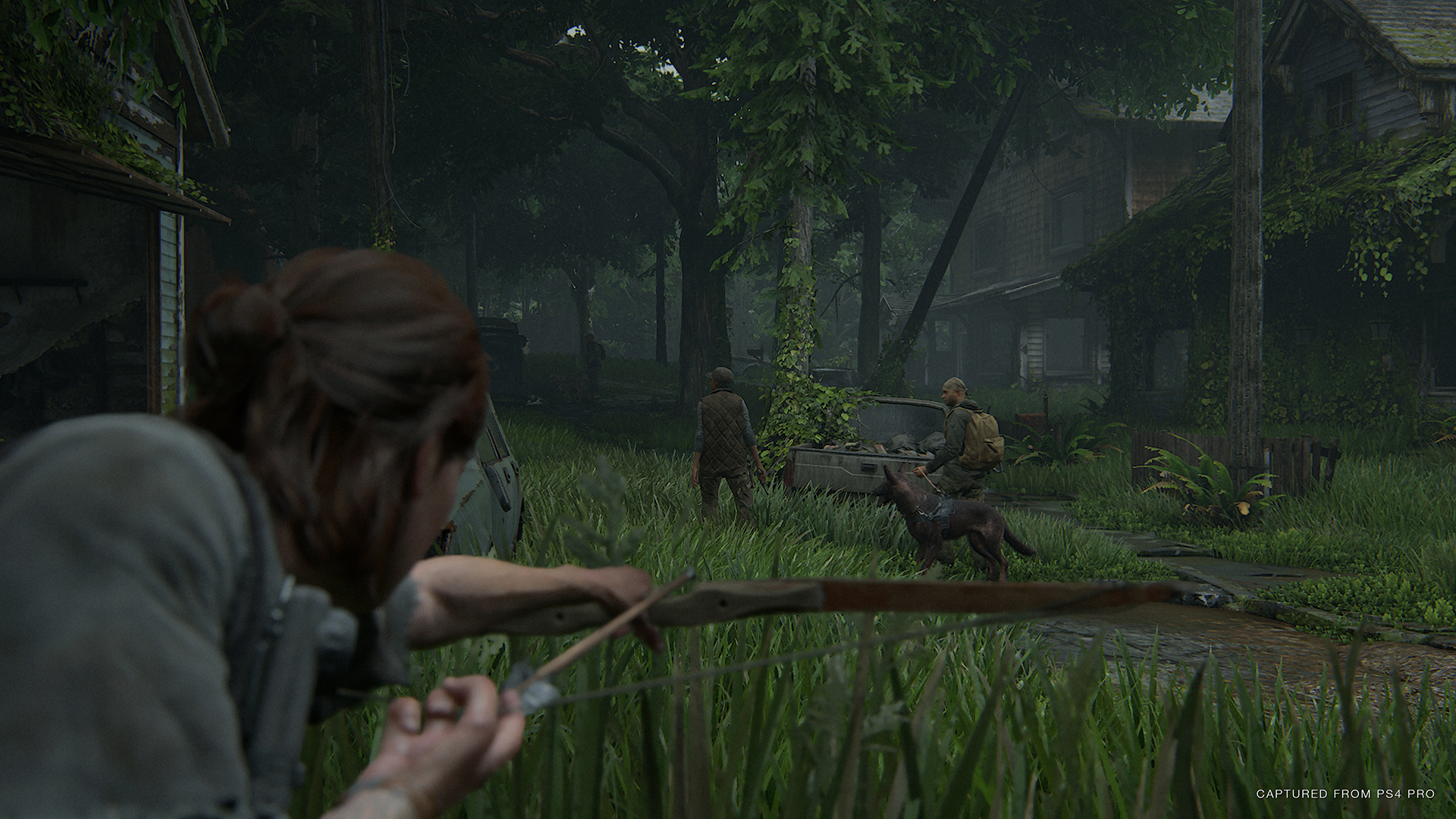
Facing off against human enemies offered another neat little surprise, too. Now, AI enemies know each other’s names, and they’ll use them when calling out orders or when someone dies. There’s something simultaneously hilarious and sad about hearing a bystander shout, “Jeff!” when you headshot someone.
Dogs, a new addition, made the encounters with these human enemies (“Kyle!”) a bit more dynamic, since their ability to sniff out your scent trail forces you to always be on the move. Rather than simply camping out in one hiding spot and waiting for an enemy to stroll over and turn around, you have to think on your feet and constantly adjust—or distract the dog to throw him off your trail. Once a fight broke out, I was a little horrified to discover that you can inflict the same degree of damage on the dogs that you can on humans during gunfights. For some strange reason, seeing that level of gore on an animal is more disturbing than seeing it on a person.
When I asked Soria if it was particularly sad to motion capture the dogs knowing what players would be doing to them, she told me it was about reinforcing the message of the story. “The cycle of violence is a core theme of the game, and we want the players to make sure they feel the consequences of their actions,” she said. “So how far are you willing to go in pursuit of justice? And violence is a core element of it, like how resorting to violence as a solution can lead to more violence as a response, over and over.”
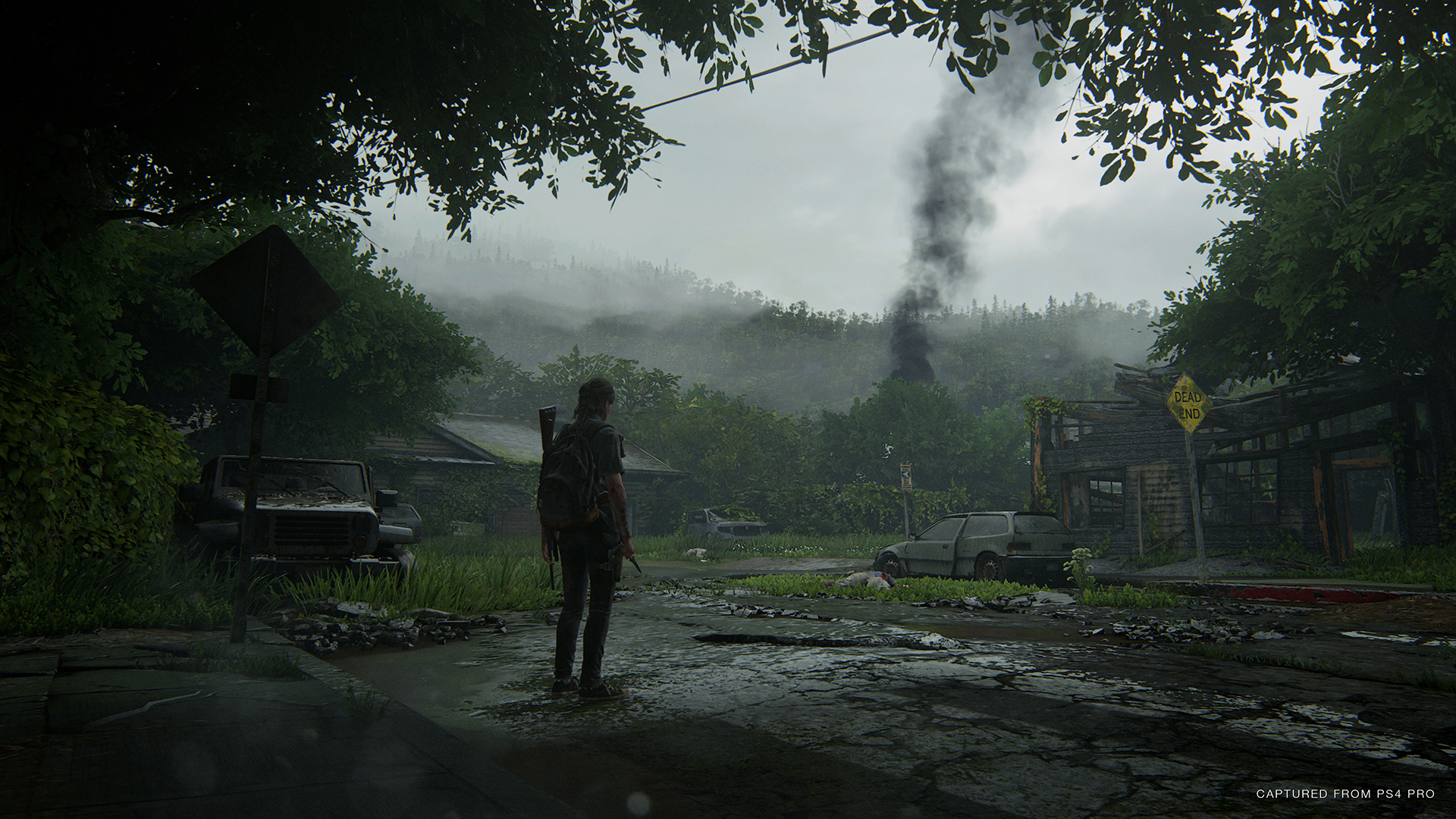
Which brings us back to the story, and back to the matter of whether The Last of Us Part II will say something to that truly needed to be said. As much as I hate to say it, I’m still not convinced. Even on a thematic level, what’s here doesn’t sound as compelling. Gaming has done plenty of revenge stories and the “violence begets violence” shtick. I’m not saying that the game couldn’t do something different and worthwhile with the premise. I just don’t see it on the surface.
The State of Play trailer revealed that Ellie experiences some tragedy that kicks her off on this journey. The demo didn’t include that scene, but the editing in the trailer and the context from what I played definitely made it look like Dina was killed. It might also be Joel, depending on whether the “Joel is dead and only appears in Ellie’s imagination” fan theory is correct. Both of those options sound boring to me. I hope the trailer was just a fakeout and the fact that Joel barely appeared in the demo was just a fakeout, and Naughty Dog has something less expected in store.
Still, even if the The Last of Us Part II doesn’t end up justifying the decision to continue a story that ended perfectly, I’m increasingly confident it’ll be impressive to play in just about every other respect. The graphics are shaping up to be among the most impressive of this waning hardware generation, new design additions are pushing the last game’s blend of stealth and action further in a way that excites me, and the performances and dialogue match the high bar of the first game so far. It’s the bigger picture I’m worried about—though I’d be more than happy to be proven wrong.
